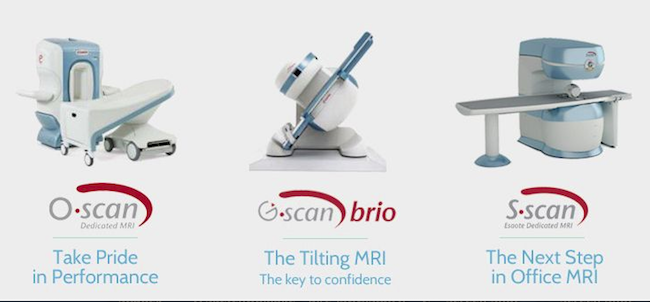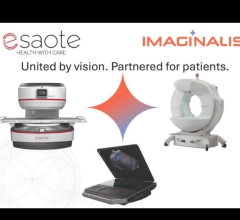
February 25, 2015 — At the 2015 European Congress of Radiology (ECR 2015), Esaote introduced Evolution’15 (EVO’15) as the latest upgrade in its dedicated magnetic resonance imaging (MRI) Evolution program. EVO’15 combines software updates and new hardware features to provide high image quality and increases productivity by almost 50 percent.
Powered by eXP technology, EVO’15 is available across Esaote’s entire MRI portfolio and provides the following benefits:
- Increased image quality for better diagnostic accuracy, due to a combination of eXP technology, graphic processing unit and X-MAR (Metal Artifact Reduction), which reduces inhomogeneity, allowing for a better evaluation of the prosthesis
- Reduced image acquisition and reconstruction times by as much as 50 percent, thanks to Speed-Up Pro, which helps to increase throughput and minimize patient discomfort
- Increased signal homogeneity and SNR as a result of the multichannel lumbar and cervical spine coils
By combining Speed-Up technology with GPU-based image reconstruction, the EVO’15 upgrade for Esaote’s G-scan Brio enables a very fast acquisition protocol for evaluation of spine morphology in the weight-bearing position in under 10 minutes.
Other features include:
- EVO 3D: Isotropic 3-D sequences reduce voxel size, enabling high resolution Multi-Planar Reconstruction. Used in conjunction with Speed-Up Pro, scan times are reduced by almost 50 percent
- X-MAR: Uses new imaging sequences that increase signal to noise ratio, yet also reduce scan time. Visualization is improved using enhanced image contrast and metallic artifact reduction to reduce in-plane metal distortions (ideal for evaluating prosthesis instabilities and for post-operative patients)
- e-Spine: Optimized spine protocols and examination management for image clarity, plus improved patient comfort and operator usability
EVO’15 includes brand-new multi-channel coil upgrades for performance-enhanced ergonomics and patient comfort. The advanced technology has been developed by using a low-impedance pre-amplifier, which is able to achieve a more efficient channel de-coupling for maximum signal detection.
Frieder Mauch, M.D., head of the department of shoulder and elbow surgery and MR imaging at Sportklinik Stuttgart in Germany, uses the EVO’15 upgrade with Esaote’s weight-bearing G-scan Brio: “Having two or more images showing what is happening when the patient is in different weight-bearing positions can give a better idea of the mechanical issue causing the pain. Before the EVO’15 Upgrade, this exam procedure took longer, which meant greater patient discomfort, and more movement artifacts. Now, with the EVO 3-D sequence, we can run just one steady state sequence in just one plane, and then reconstruct images in any other plane using the MPR (Multi Planar Reconstruction) features. This makes for a full weight-bearing exam in less than 10 minutes.”
For more information: www.esaote.com


 December 15, 2025
December 15, 2025 









